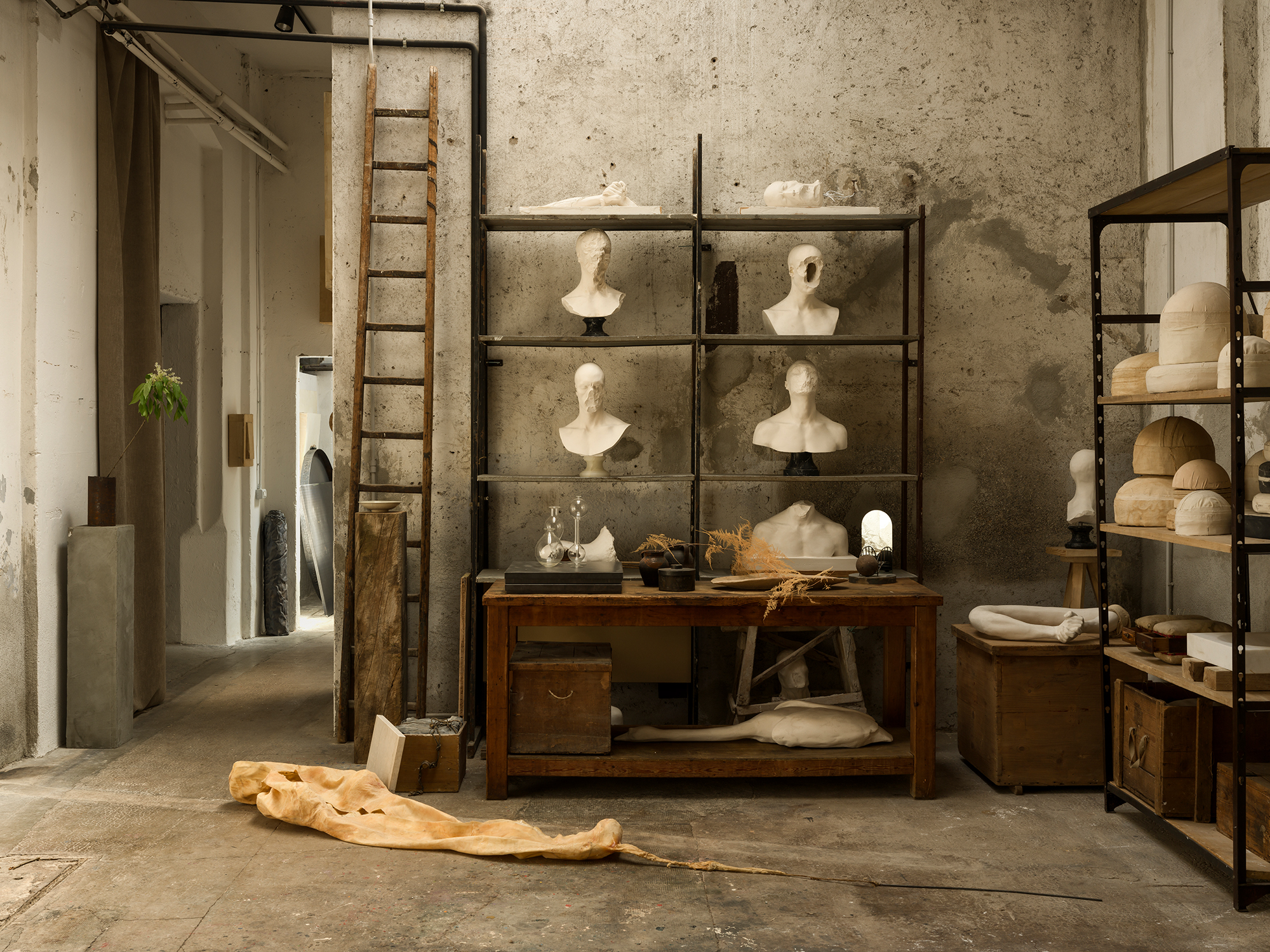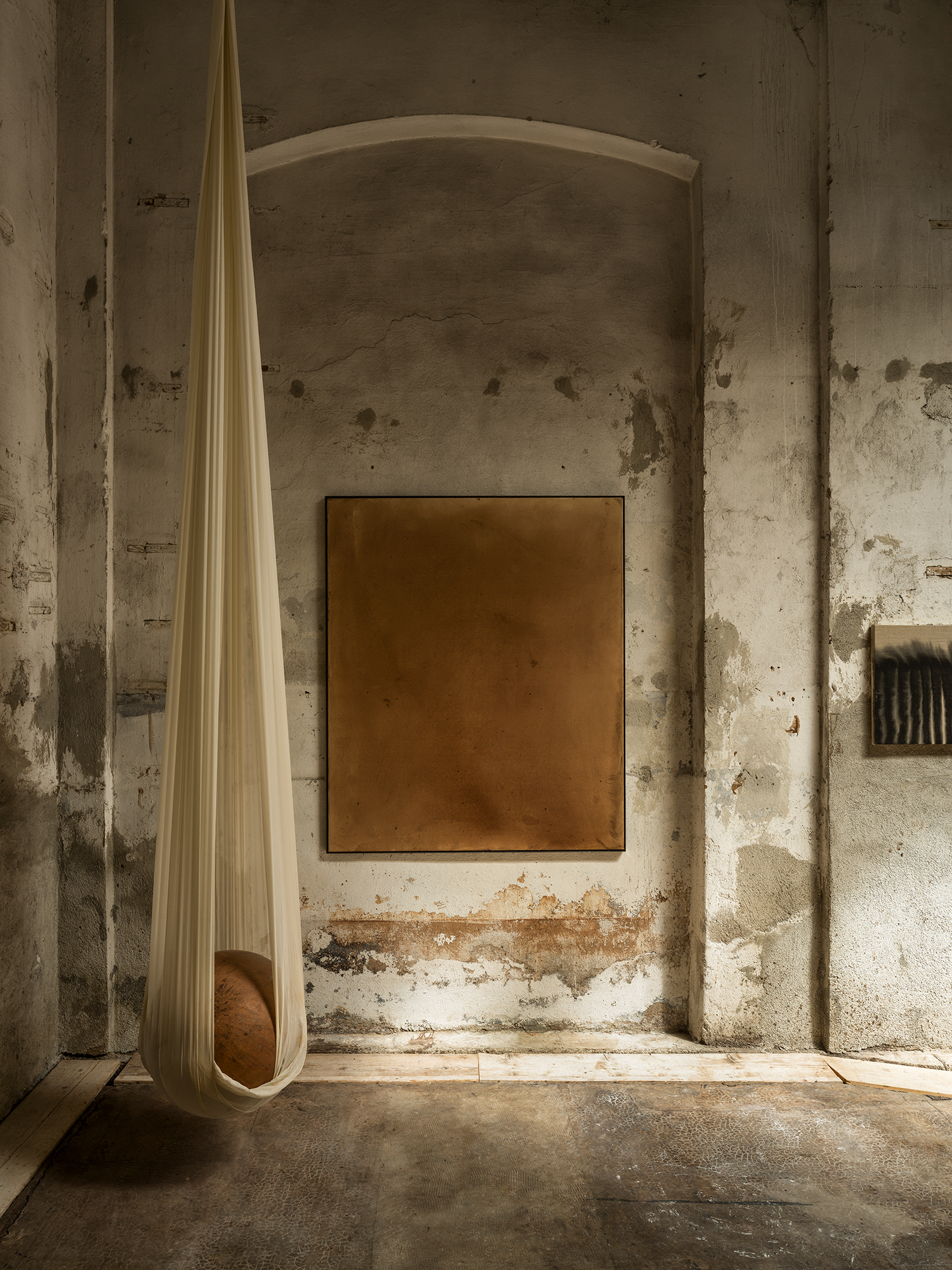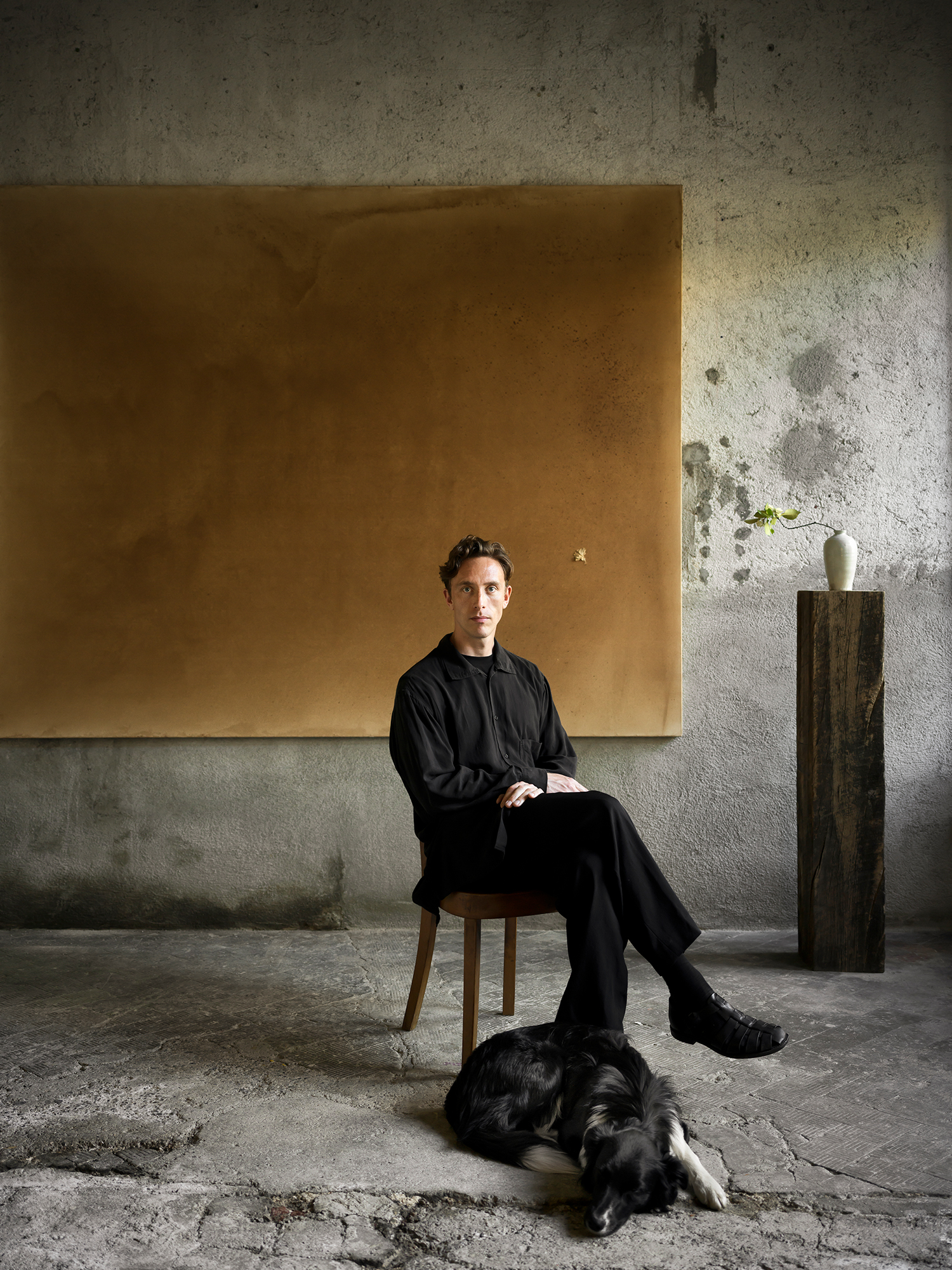

Liminal Space
Words by Micha Van Dinther
Brescia-based artist Leonardo Anker Vandal shares how art has induced a cathartic journey through the layers of his personal history and experience of living; informed by poetry, psychology and literature, his immersive installations encourage others to search beneath the surface too.
Born in a suburb of Copenhagen, Danish artist Leonardo Anker Vandal’s early years were steeped in creativity, encouraged by his parents who nurtured his fascination with art, theatre and ballet; his mother was a dancer and he spent time in her studio and attended her stage rehearsals. However, his life took a dramatic turn just after his seventh birthday when a tragedy left him in foster care on the remote Danish island of Orø, isolated from the culture he loved. This marked the end of his early artistic explorations, yet his creative spirit lay dormant, waiting to be reignited.
Moving around his Brescia studio, Anker Vandal conveys a striking figure. Soft-spoken and deliberate, he exudes a quiet grace that reflects his introspective nature. His attire echoes the austere elegance of ‘old world’ labourers, with monochrome clothing that complements the haunting and delicate qualities of his work. Watching him at work, washing bed linens, sewing and applying liquids on canvas, is like stepping into another era. There is a beautiful paradox to him – while deeply connected to his surroundings and with an almost old-fashioned aura, he is also incredibly swift in his digital communications and his social media executed with thoughtful precision, reflecting his intentional approach to sharing his world.
Can you describe what your creative process in your studio looks like?
I’m very spontaneous in some ways when it comes to my work, yet if I have a show, I become obsessive, quite manic to some degree. If I don’t have a show, I will typically meander and go for longer walks with my dog several times a day. I share something with what is described by Beethoven and Wordsworth. It is like the work is forming itself within me, and at some point, I can’t contain it anymore. My hands become the outlet and the materials at hand are all being used. Sometimes I draw for two or three days and then I don’t for many months. Usually, I have too many ideas and given I have very few shows and no gallery representation, I just create because I have to for my mental health and because I really want to see it come alive. Right now, I’m working on an installation in my studio, which I’m very excited about.
How do the themes of presence, absence and liminal spaces manifest in your art?
There is always an antithesis between the materials I use, creating a contrast I am naturally compelled towards. The liminal space represents the possibility of a sense of transition. Right now, I’m making an installation in my studio that contemplates an old idea of adumbration and apparition, which most of my early paintings were about. It’s a white
room with white silk walls inhabiting the entirety of the space. While navigating through this room, the identities of other visitors are blurred into haunting shadows that follow you. At first glance, the installation looks peaceful and even pretty, yet it is one of my most daunting works, giving me a great sense of anxiety. I think that is the best way I can
answer the question.
What do you hope others take away from your work?
I’ve noticed from my last few exhibitions that I’ve been able to connect viewers to their own memories, allowing them to start a journey of healing. I become a fictive character, like one from a Balzac novel, and through my actions, they find a connection. I have seen people become very emotional while experiencing the work, which is really beautiful. Whether they are able to follow through on their repressed memories or leave them on the surface is their responsibility, but I know they’ve scratched the surface and can be compelled towards something not yet explored.





